The Starfish Story
“Early one morning, an old man was walking along the shore after a big storm had passed and found the vast beach littered with starfish as far as the eye could see, stretching in both directions. Off in the distance, the old man noticed a small boy approaching.
As the boy walked, he paused every so often and as he grew closer, the man could see that he was occasionally bending down to pick up an object and throw it into the sea. The boy came closer still and the man called out, “Good morning! May I ask what it is that you are doing?”
The young boy paused, looked up, and replied “Throwing starfish into the ocean. The tide has washed them up onto the beach and they can’t return to the sea by themselves,” the youth replied. “When the sun gets high, they will die, unless I throw them back into the water.”
The old man replied, “But there must be tens of thousands of starfish on this beach. I’m afraid you won’t really be able to make much of a difference.”
The boy bent down, picked up yet another starfish and threw it as far as he could into the ocean. Then he turned, smiled and said, “It made a difference to that one!”
Labeled As Untrainable
There are nearly 50,000 other mustangs just like Willie that have been rounded up and taken off public lands, where they wait in holding facilities to be adopted out. Unfortunately, the average number of horses adopted out per year currently is about 2,500 per year. I would guess that many of those horses may end up in similar positions as Willie, jumping from home to home and later labeled as “untrainable” due to a lack of understanding.
When you think in terms of numbers, the task at hand seems awfully daunting and even downright discouraging. Afterall, Willie is just one horse. But you can’t think of saving one mustang in terms of mere numbers. Why? Considering mere numbers does not take into account something larger at work.
In 1963, Edward Lorenz presented a hypothesis to the New York Academy of Science that, initially laughed at, would later come to be recognized as the “Butterfly effect” (and 30 years later, accorded the status of a law; The Law of Sensitive Dependence Upon Initial Conditions). The theory, simply stated, was this: A butterfly could flap its wings and set molecules of air in motion, which would move other molecules of air, in turn moving more molecules of air–eventually capable of starting a hurricane on the other side of the planet. The Butterfly Effect can be seen with people, too. One human can make a single move hundreds of years ago whose effects still ripple through your life today.
“When you save a single horse, a single mustang, like Willie, it is impossible to realize the full impact of your action.”
And if you don’t take into account this ripple effect, you can become easily disheartened. We all have the power to create positive change but one of the main reasons people fail to action or put it off is because we become overwhelmed. How can anything I do, as a single person, solve the world’s problems? But it does. You do. You are. Focus on one step, one starfish, one mustang, one person at a time.
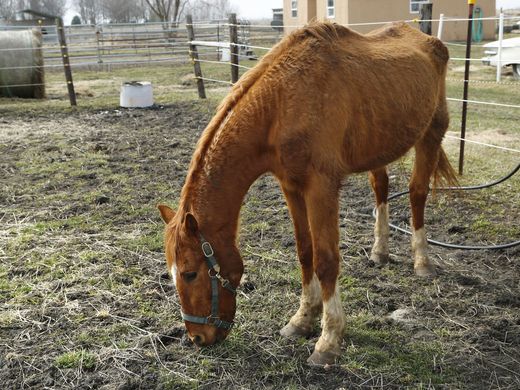
“Willie, nearly starved to death, shortly after he was confiscated by Animal Care & Control”
But when I started this journey, I focused on big impact and got overwhelmed. I wanted to change the world, and thought that’s what I needed to focus on in order to that. Big events, big turnouts, big following. In everything I did, “think big.” Over the course of my 24th year, that started to change. During my time with Willie, “Think globally, act locally” became my new mantra.
Here’s how it started.
When I chose to call off the rest of my tour this past spring, one of the events was a liberty clinic in Indiana. I hated having to go back on a commitment (hence one of my motivations for figuring out balance, so that I would never have to put people through that again)! One of the emails I received in response was from a woman who had signed herself and her family (including her two granddaughters) up for the clinic. Days of counting down, saving up, and excitement built up, only to receive the email I wouldn’t be able to make it after all. She was, understandably, disappointed and dreaded having to give the kids the news. (It is important to note this woman had also been supporting my training since I had started out in Indiana, coming for weekly lessons, and later once I left Indiana, signing up for our membership and consistently supporting our store).
To say I felt terrible was an understatement. She had supported me so much over the years and this was not the kind of gratitude I’d hoped to give back to her. In order to make my best attempt to make up for my shortcomings, I offered to do a “private clinic” at her home for her family while I was in Indiana visiting family for the holidays in July. Her entire family was so welcoming and grateful. And those kids…It had made a huge impact on them to say the least. After the clinic, she wrote to me “You have touched me and our family more than you will ever know.”
“Spending the day with her family–and especially her young granddaughters–felt so good. And it really encouraged me by being able to see noticeable changes and progression throughout the day. I crave making those kinds of deep connections and planting a seed into our younger generations of a new way of doing things.”
*Pictured on of her granddaughters I had the pleasure of teaching.
It is true I only taught two little girls that day. It wasn’t a crowd of thousands in the stands. But the thing is, those two little girls will go on to share what they learn with others. And their friends will share with their friends. And so in this way, the butterfly effect will cause my message to ripple out to the world exactly as it is meant to. Now, setting out to conquer the world seems to be a foolish undertaking, and one that will burn your light out rather quickly. All I need to do is share my message with one person at a time, one mustang at a time…And that is more than enough.
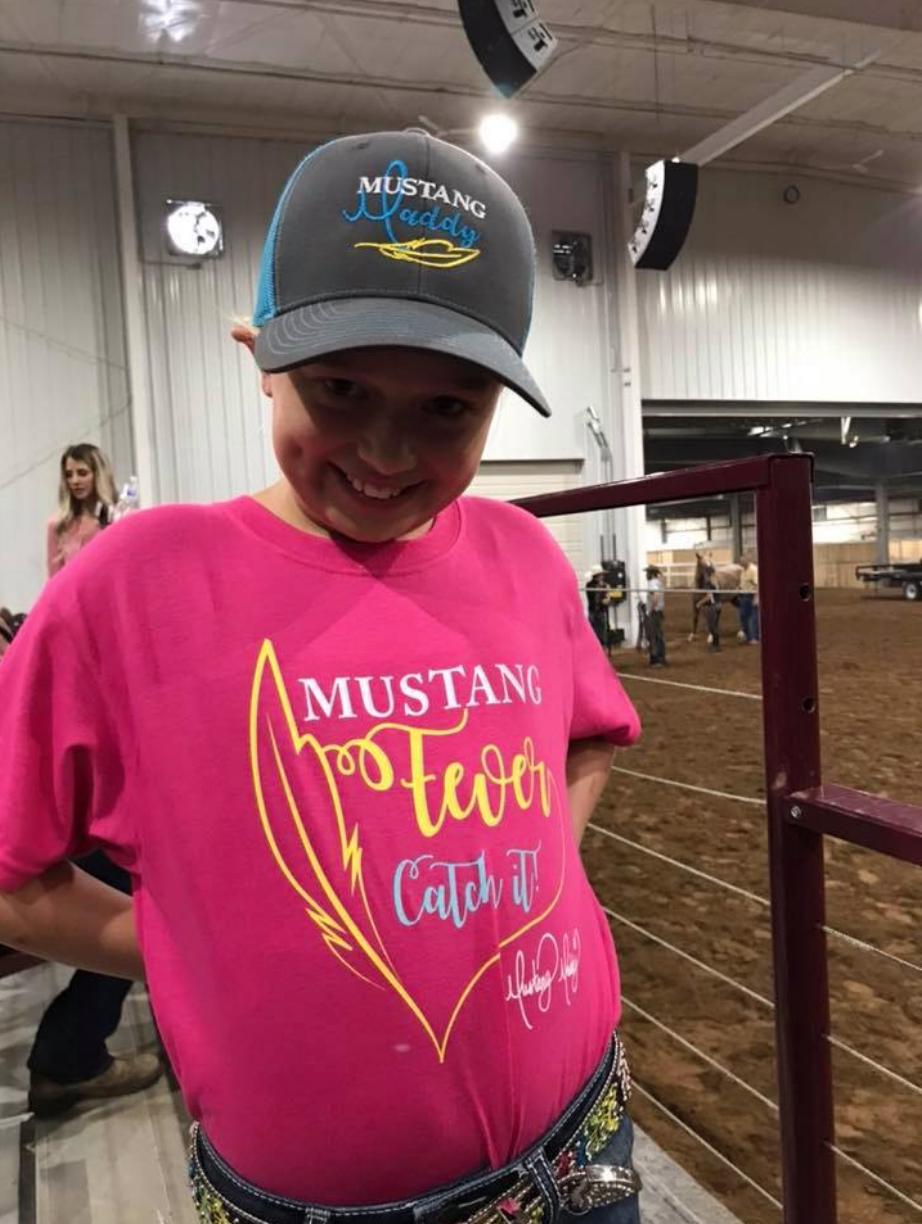
As well as shifting my perspective on how to bring about change externally, I also looked at bringing about change internally. More notably, what were my internal motivations for bringing change and performing rescues like Willie? I wanted to bring any shadows into the light to make sure my intentions were coming from my heart rather than a place of fear. In the process I discovered that the most powerful change you can bring about begins internally and ripples out into the external world. Let me explain.
From a young age, I was a self-proclaimed rescuer.
My favorite character in Winnie the Pooh was Eeyore because I melted every time his tail fell off or his house fell down. I wanted to grow up to be Barbie Pet Rescue in real life and stripped my closet, replacing my clothes with stuffed animals in the cubbies who were being “rescued” and receiving veterinary care. In elementary school, I would observe my classmates and befriend the bullied and the ostracized kids. Later, my rescuer nature got me into trouble in romantic relationships; many of the guys I dated were plagued by traumatic pasts, addictions, depression, suicide, and emotional turmoil. I mistakenly thought I could save them with my love alone.
But that same pattern led me to the mustangs, because they were the underdog of society. I often share in my message during demonstrations,
“Perhaps this is why we fall in love with the American Mustang…Because we see in the mustang what we see in ourselves; the part of ourselves that has been constricted by the beliefs that we aren’t good enough, pretty enough, rich enough, smart enough, etc to follow our hopes and dreams. But look at what happens when you believe in the mustang…when you believe in yourself! And so, for every person that has been told they can’t, the mustang tells them, they can.”
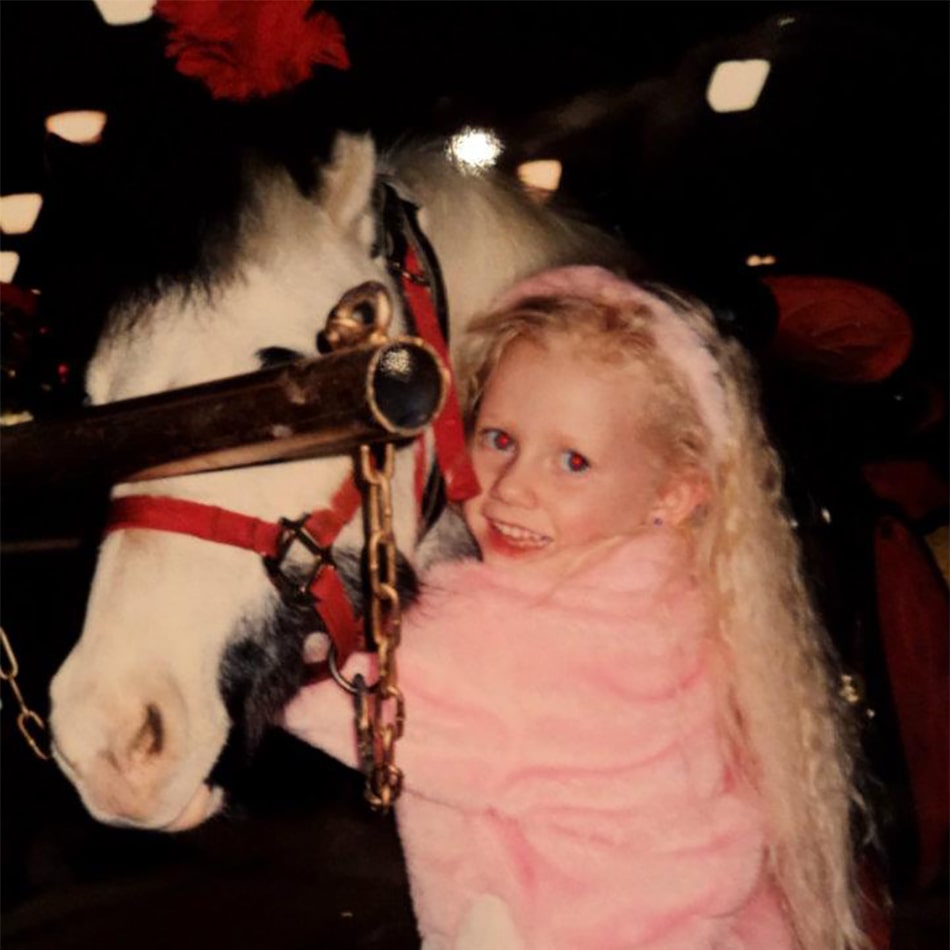
There is always a duality to be embraced, and it is no different with the “rescuer” archetype. Although it is an act of love to use your own blessings to help enrich others’ lives, it can quickly become dangerous when you cross the fine line into the land of extremes and become so obsessed with “rescuing” everyone else that you forget to take care of yourself. My desire to “rescue” was operating off love, but there was a part of it operating off fear as well. My pattern of trying to “save” others came to be affected and motivated by two fears. I discovered that my rescue mentality…
- Satisfied my desire to feel “needed” and worthy of love. When I could rescue others, I felt needed and secure in the relationship.
- Distracted myself from my own suffering. It was easier to help tell others what they needed to do to heal than it was to heal myself.
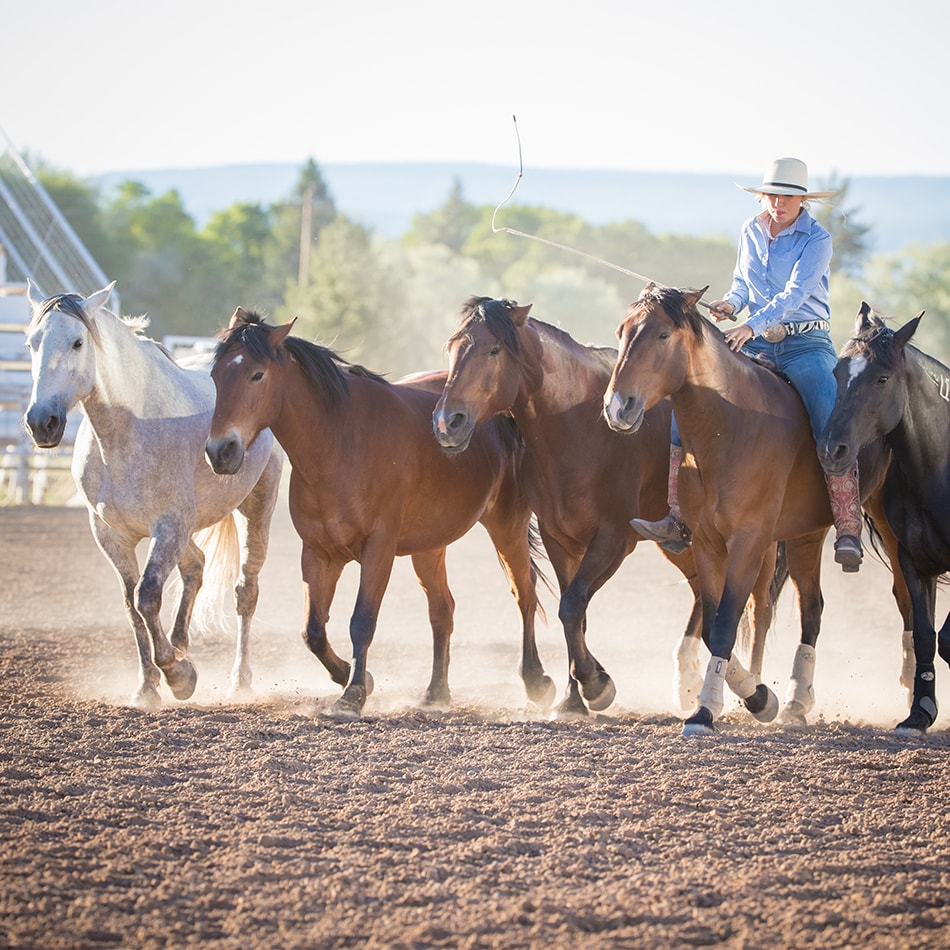
Once I became aware of these shadows, I took away their power by bringing them into the light. I address those fears as they surface now rather than letting them play out my life. Once I discovered them, I felt I could bring about change from a place of wholeness rather than a place of brokenness, from a place of abundance rather than place of lack.
So where did I start? Myself. I shifted my focus inwards. Alan Cohen writes in his book, A Course in Miracles Made Easy, “‘How do I contribute to end the suffering of humanity?’ is the most important question you will ever ask. The answer to that question begins with your answer to the question, ‘How do I end my own suffering?’ If you can find your own way out of pain, you will know how to help other people out of their pain. Until then your efforts are hollow.”
I changed my primary focus this year from changing the world to changing myself. The deeper I went down this rabbit hole, the more I learned about how to navigate feelings of pain, separation, trauma, and triggers. And one of the biggest parts of my own healing journey has been this: In order to heal, you a change in mindset must occur. Instead of falling into a loop of “why did this happen to me” asking “why did this happen for me?” It’s about cultivating a faith that all things happen for your highest good, even if you don’t understand why at the time. And once you realize this, you realize that every struggle has been here to help temper you, refine you, and catalyze you.
I believe our ultimate job here on Earth is to be an alchemist of our own lives; to embrace every moment as a lesson to learn and a way to grow..To turn the lead in our lives into gold.
If you can do that in your own life, suddenly you look at others who are going through certain struggles in their life in a different way and you ask yourself the fundamental question: What are you trying to “rescue” people from if the deep struggles they are going through are merely catalysts to help them bring change into their lives? And a step further, you realize that if you try to rush in and perform a self-led “rescue operation,” you are committing a crime: You are robbing them of their ticket for transformation.
Think of it this way. When a butterfly emerges from its cocoon it must go a process in which its struggles to break free. This struggle is what strengthens its wings and allows it to fly. If you try to help the butterfly break free from the cocoon, it will not complete this crucial tempering process and its wings will lack the strength they need. The butterfly will then shrivel up and die. Trying to step in and change someone else and “rescue” them from the opportunities that are presented to strengthen their wings is not an act of love, but of ignorance.
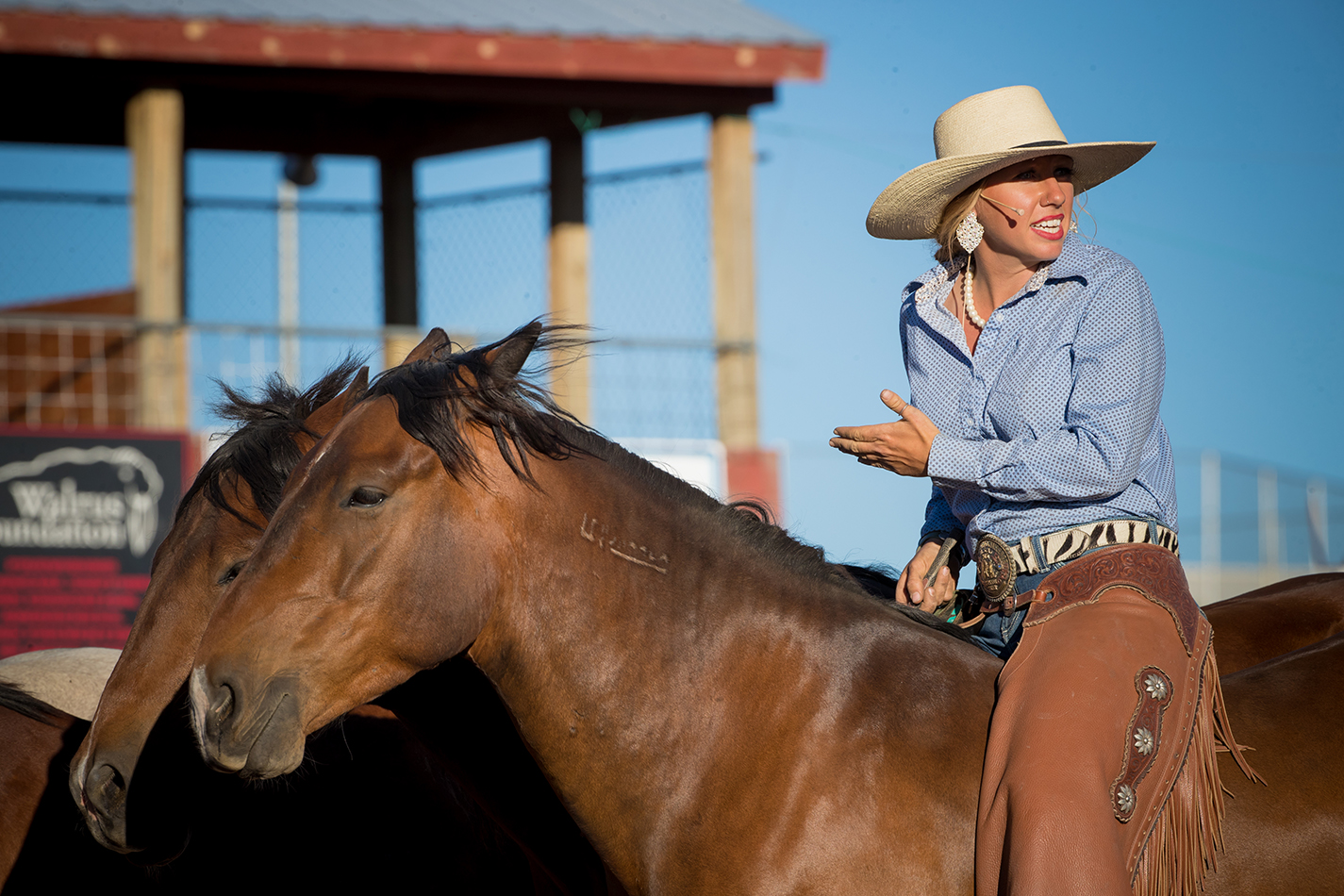
Gabrielle Bernstein writes in her book, Judgment Detox, that such an act is not an act of love but an act of fear and selfishness because their suffering makes you uncomfortable. When you try to change someone, you are saying you know what is best for them and your unsolicited help is a way of controlling and judging them.
The most unloving thing we can do someone is try to change them; the most loving thing we can do for someone is to accept them as they are.
This year, I finally understood what Ghandi meant when he said, “Be the change you wish to see in the world.” The truest of teachings comes from changing yourself. This kind of teaching does not occur in a classroom, by memorizing information for a final exam. This kind of teaching occurs by the energy you broadcast. When one person chooses love, it is felt throughout the entire world. Alan Cohen writes, “You thought you were here to fix the world. Instead you are here to appreciate what is before you and see the world through new eyes…You are here to transform the world by changing your thoughts about the world and who you are in it. You are a loving being living in a universe founded in love. Remember but this, and you will master the only lesson you are here to learn. Then you will teach it constantly without even trying…End the world [of separation] today by refusing to contribute to the pool of fear that has kept the world of sorrow in force. End starvation by feeding your soul. End war by ceasing the war against yourself. It is your happiness, not your pain, that will save the world. Misery has enough company.”
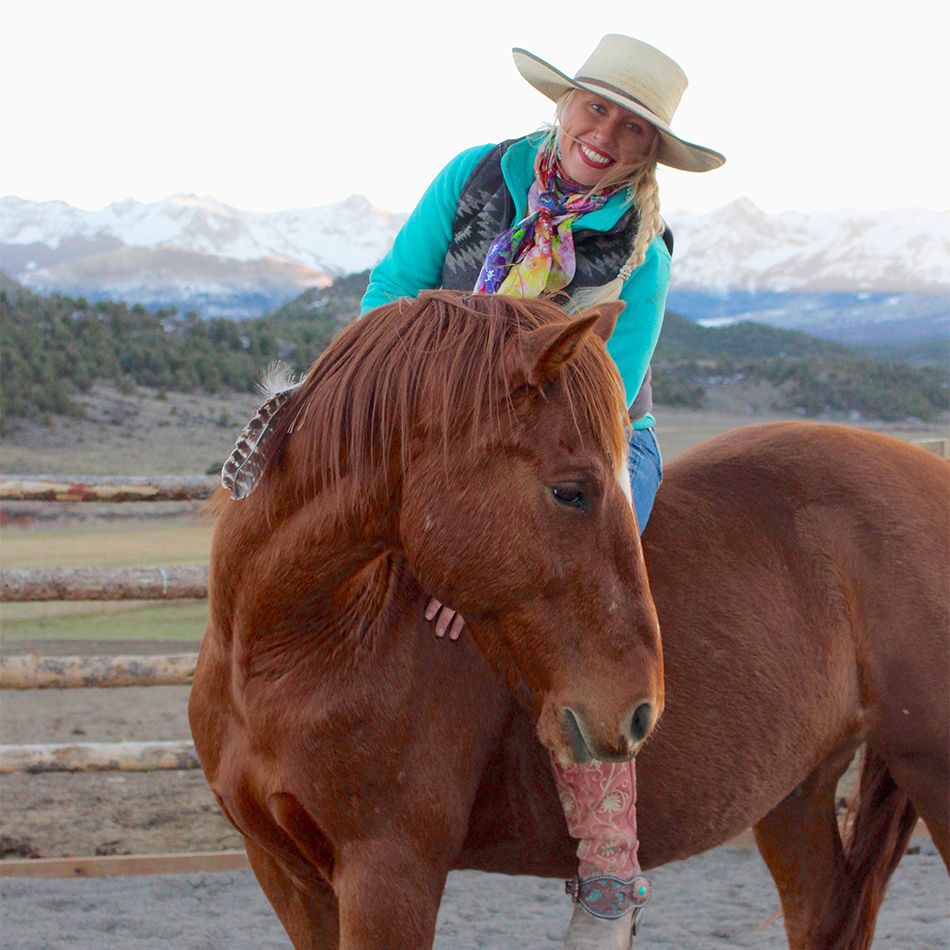
Willie’s journey ultimately taught me that all external journeys eventually lead inwards. I had set out to rehabilitate a 15 year old mustang who had developed lifelong reinforced coping strategies to survive the abuse he had endured the only way he knew how. I thought the answer lied in changing him, but it started with changing myself. Willie asked me to search my soul for the answers I needed to find. The more work that I put into understanding and improving myself, the more I could have understanding and compassion for him that led to opening up about new ideas, new methods, and new techniques that would help him overcome his past.

